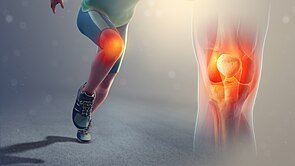Introduction
Back strain, a common ailment affecting millions worldwide, often presents without a clear-cut injury. While many assume that back strain is solely caused by sudden movements or heavy lifting, there are various factors contributing to this discomfort. In this comprehensive guide, we delve into the reasons for back strain without sustaining an injury and provide effective prevention techniques.
Sedentary Lifestyle
One of the primary culprits behind back strain is leading a sedentary lifestyle. Prolonged sitting at desks or in front of screens can lead to weakened muscles, especially in the core and back regions. As muscles weaken, they become more susceptible to strain even during simple movements like bending or twisting.
Poor Posture

Posture plays a pivotal role in spinal health. Individuals who frequently slouch or maintain improper posture put excessive strain on their back muscles and ligaments. Over time, this strain can lead to chronic discomfort and increase the risk of developing conditions like herniated discs.
Muscle Imbalance
Muscle imbalances, often a result of poor exercise habits or repetitive motions, can contribute to back strain. When certain muscle groups are stronger than others, it creates an imbalance that puts undue stress on the back. Targeted exercises aimed at strengthening weak muscles and stretching tight ones can help restore balance and alleviate strain.
Stress and Tension
Psychological factors like stress and tension can manifest physically, leading to muscle tightness and discomfort. High-stress levels often cause individuals to unconsciously tense their muscles, particularly in the neck and back. Employing stress-reduction techniques such as meditation and deep breathing exercises can alleviate muscle tension and reduce the risk of back strain.
Improper Lifting Techniques
While heavy lifting is commonly associated with back injuries, even light objects can cause strain if lifted improperly. Bending at the waist instead of using the legs to lift, and twisting while lifting can strain the muscles and ligaments of the back. Implementing proper lifting techniques, such as bending the knees, keeping the back straight, and lifting with the legs, can significantly reduce the risk of injury.
Obesity
Pain O Soma 500mg is main medicinal advantage is its capacity to efficiently treat musculoskeletal pain. By addressing the underlying muscle tension and spasm, this medicine offers substantial relief from a variety of diseases, including injuries, sprains, strains, and chronic illnesses.
Excess weight places added strain on the spine and supporting muscles, increasing the likelihood of back strain. Obesity not only exacerbates existing back issues but also hampers mobility and exacerbates poor posture. Maintaining a healthy weight through a balanced diet and regular exercise can alleviate strain on the back and improve overall spinal health.
Lack of Physical Fitness
A lack of physical fitness contributes to weak muscles and poor flexibility, both of which can lead to back strain. Incorporating strength-training exercises and flexibility routines into your fitness regimen can help build a strong, resilient back and reduce the risk of strain.
The Anatomy of the Back
Before delving into how back strain can occur without visible injury, it’s essential to understand the intricate anatomy of the back. The back is a complex structure comprised of bones, muscles, ligaments, and tendons, all working in tandem to support the body and facilitate movement.
Muscles and Ligaments
The back muscles, including the erector spinae, latissimus dorsi, and trapezius, play a pivotal role in maintaining posture and facilitating movement. These muscles are supported by ligaments, which connect bone to bone and provide stability to the spinal column.
Causes of Back Strain
While back strain often occurs due to sudden movements or lifting heavy objects, there are several other causes that can lead to this debilitating condition.
Poor Posture
One of the most common causes of back strain is poor posture. Sitting or standing with improper alignment can place undue stress on the muscles and ligaments of the back, leading to strain over time.
Overuse
Repeatedly performing the same movements or activities, such as bending, lifting, or twisting, can strain the muscles and ligaments of the back, resulting in discomfort and pain.
Muscle Imbalance
Muscle imbalance, where certain muscles are stronger or weaker than others, can also contribute to back strain. When certain muscles are overworked while others remain underutilized, it can lead to undue stress on the back.
The Role of Inflammation
Inflammation is a common response to back strain, as the body attempts to heal the injured tissues. However, excessive inflammation can exacerbate pain and discomfort, prolonging the recovery process.
Acute vs. Chronic Inflammation
Acute inflammation is a short-term response to injury, characterized by swelling, redness, and pain. Chronic inflammation, on the other hand, persists over a longer period and can contribute to the development of more serious conditions, such as arthritis.
Preventing Back Strain
Prevention is key when it comes to avoiding back strain and maintaining a healthy back for years to come. Incorporating the following strategies into your daily routine can help reduce the risk of back strain:
Maintain Proper Posture
Practice good posture when sitting, standing, and lifting objects. Keep your spine aligned and avoid slouching or hunching over.
Exercise Regularly
Engage in regular exercise to strengthen the muscles of the back and improve flexibility. Focus on exercises that target the core muscles, such as planks, bridges, and yoga.
Lift with Proper Technique
When lifting heavy objects, bend at the knees and keep your back straight. Use your legs to lift the object, rather than relying solely on your muscles.
Take Breaks
If you have a job that requires prolonged sitting or standing, take regular breaks to stretch and move around. This can help alleviate tension in the back and prevent .
Seeking Treatment
If you experience despite taking preventive measures, it’s essential to seek treatment promptly. Treatment options may include rest, ice or heat therapy, over-the-counter pain medication, physical therapy, or chiropractic care.
Conclusion
Back strain is a prevalent issue that can occur without sustaining a specific injury. By addressing underlying factors such as a sedentary lifestyle, poor posture, muscle imbalances, stress, improper lifting techniques, obesity, and lack of physical fitness, individuals can effectively prevent and maintain a healthy spine. Prioritizing regular exercise, proper ergonomics, stress management, and maintaining a healthy weight are key components of prevention.





More Stories
Pharmacy Wholesale Suppliers You Can Trust
Why You Should See a Dermatologist
How Does Modvigil Help Treat Narcolepsy?